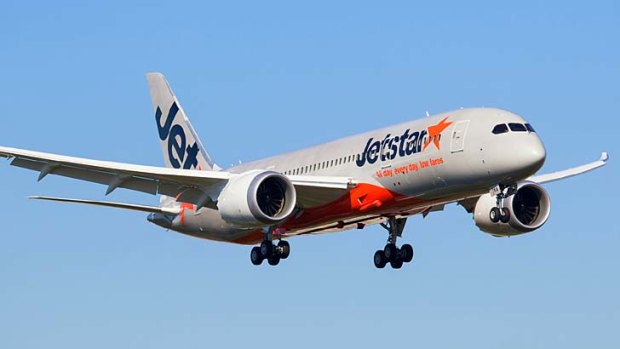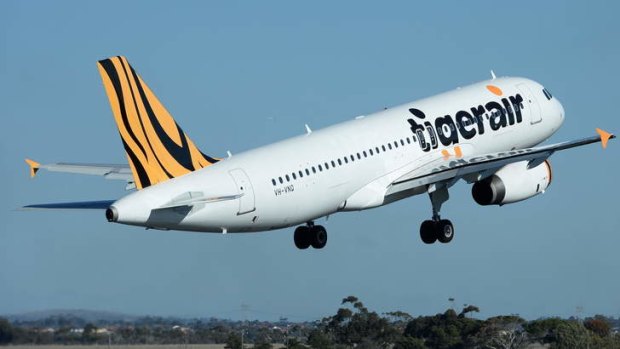By Clive Dorman

Jetstar may be profitable domestically, but it has run into trouble trying to export its no-service model internationally.
When the discount airlines began advertising fares of $29 or $9 or $1 in the years since low-cost carriers arrived in earnest in Australia after the turn of the century, you may have caught yourself wondering: "How do they do it?"
There is indeed something magical about airlines offering tickets for a 700-1000-kilometre air trip for less than the cost of a cab fare to the airport.
Airlines have always done it – throwing out the perishable commodity of airline seats for less than they cost to provide as part of their death-defying juggling act to try to make money.

Tigerair is thought to have a significant cost advantage over Jetstar, but it has never made a profit in Australia.Credit: James Morgan
But when low-cost carriers arrived on the scene, the cheap seats trick went into hyperdrive.
The theory is that you can make money selling seats below cost to people prepared to book well ahead if you have enough late bookers prepared to pay way over the odds.
In the big developed economies of the northern hemisphere, the formula has worked for 40 years since Southwest Airlines invented the low-cost carrier in the early 1970s.
But, because of its ultra-liberal investment rules, Australia has been a pioneer in doing what no other country has done: having two full-service airlines each with a low-cost subsidiary going head-to-head.
The low-cost carrier idea was not invented with the thought of two ultra-cost-efficient airlines going at each other: budget carriers were devised to take advantage of the bloated full-service airlines who dominated the flying business around the world.
Yet we now have here just such a scenario: does Australia have enough critical mass to profitably support two low-cost carrier as well as a full-service airline duopoly?
Jetstar and Tigerair have both lost money in the past year; although Jetstar was profitable domestically, it has run into trouble trying to export its model internationally to Japan, China and southeast Asia.
Tigerair decided to take on Jetstar's Australian patch in 2007 when it found AirAsia had consumed much of southeast Asia's appetite for low-cost flying and took advantage of Australian regulations that allow domestic airlines to be 100 per cent foreign-owned.
But what do you do if you're competing with another low-cost airline that has already used all of the low-cost carrier marketing tricks?
Well, if you have nothing other than price to distinguish yourself from the competition – and both Jetstar and Tigerair are both built on the no-service model – you have no alternative to being even cheaper.
With its smell-of-an-oily-rag management style – it's still based in a demountable office building in the back blocks of Tullamarine airport - Tigerair is thought to have a significant cost advantage over Jetstar (although both carriers won't reveal the salient facts about their cost structures), but its marketing and pricing strategy focusing on below-cost fares to built its network means that it has never made a profit in Australia.
That has to end – not just at Tiger, but at Jetstar as well. Though, for Jetstar, that means it has to start reining in the cost of its international misadventures, there will be fewer promotional cash splashes on its domestic customers.
Over at Tigerair, they are talking about the "critical mass" the carrier needs to be sustainable: with a fleet of just 13 A320 jets, Tiger needs to at least double in size to start taking in more money than is going out.
That also can't be done when it is relying on most of its seats being sold below cost, even though 85 per cent of its seats are full, as at present.
Inevitably, that means fewer of the too-good-to-be-true crazy fares and more of the break-even-or-better deals, although the latest two-for-one offers Tiger sent me this morning are still way below cost: $49 Melbourne to Adelaide; $165 Sydney to Perth; $99 Brisbane to Adelaide; $129 Sydney to Cairns.
What are the fare "trigger points" that have you reaching for the credit card? Do you, as the marketing theory has it, subliminally react to a $49 fare but not a $59 fare?
Sign up for the Traveller newsletter
The latest travel news, tips and inspiration delivered to your inbox. Sign up now.